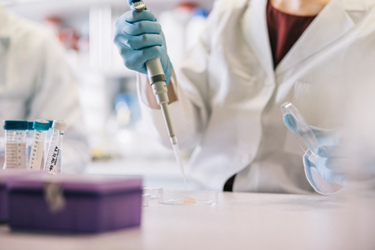Optimization Of rAAV Production Using An In-House Suspension HEK293 Cell Line
By Chris Brown, Yeonji Kim, Jing Zhu, and Xiaojun Liu

Recombinant adeno-associated virus (rAAV) vectors have emerged as a leading platform for gene therapy, necessitating the development of efficient and scalable production methods. One routinely used manufacturing approach for these vectors involves the transient transfection of plasmid DNA into mammalian cell lines such as HEK293. Many HEK293 cell lines are available commercially and have been used to produce rAAV with varying levels of success. These commercial HEK293 cell lines offer advantages such as their adaptability to suspension culture and their availability at GMP-grade, but they are often burdened with challenges such as low productivity, inconsistent quality, and high cost. To address these limitations, we have developed a manufacturing approach using a novel, in-house suspension HEK293 cell line optimized for rAAV production.
Developing this process first involved comprehensive screening of serum-free, chemically defined media formulations to support robust cell growth and high rAAV titers. In addition, transfection conditions were also optimized, including the evaluation of novel transfection reagents and enhancers. To mitigate cell clumping, various anti-clumping strategies and reagents were tested, resulting in a solution that reduced cell aggregation by greater than 75%. Lastly, we were able to increase both vector yield and quality through targeted plasmid engineering. We have also demonstrated the scalability of this cell line and process and have established scaled-up production methods in single-use bioreactors at both the 2L and 10L scales through targeted optimization of key parameters such as pH, dissolved oxygen, and agitation rate. Through this work, our proprietary HEK293 cell line and optimized process meets or exceeds the bar set by commercially available cell line options, achieving rAAV titers of 1.5x1015 genome copies per liter in crude lysate across multiple serotypes. In addition, vector quality was improved, with a proportion of full capsids in crudeupstream lysate greater than 40% in some serotypes. This optimized platform offers a robust, scalable solution for high yield and high quality rAAV production, allowing for reduced costs compared to commercially available HEK293 cell lines and improving the manufacturability of the rAAVs needed as a critical vector for gene therapy.
Get unlimited access to:
Enter your credentials below to log in. Not yet a member of Advancing RNA? Subscribe today.
